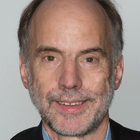The Current Column
50 years after the first Club of Rome report
How significant is The Limits to Growth today?
Stamm, Andreas / Jakob Rhyner / Hartmut IhneThe Current Column (2022)
Bonn: German Development Institute / Deutsches Institut für Entwicklungspolitik (DIE), The Current Column of 30 May 2022
Bonn, 30 May 2022. It is now 50 years since a 200-page report acted as a wake-up call for global society: The Limits to Growth drew attention to the fact that there can – and even must – be limits to the process of continuous growth on a finite planet. The report was commissioned by the Club of Rome, which had been set up in 1968 as an informal grouping of prominent politicians, diplomats, scientists, intellectuals and business leaders. The Club of Rome’s mission is to address the urgent issues facing humanity as complex, interdependent questions rather than viewing them as isolated cases in disciplinary silos. The idea is to examine these issues as part of comprehensive, long-term research projects and, as a consequence, recommend potential courses of action. The history of The Limits to Growth has shown that research conducted in this way can actually initiate worldwide political debates and anchor them in the public consciousness.
Is it still worth reading The Limits to Growth fifty years on and, if so, what lessons can be learned?
The report gazes into the crystal ball by analysing five megatrends of the late 1960s and early 1970s: population growth, industrialisation, malnutrition, consumption of non-renewable resources, and environmental pollution. This was the first time in the history of Earth system research that computers had been used to model the development of complex systems over time. Various assumptions are used to investigate how the aforementioned megatrends will evolve both individually and by interacting with each other. One of the key messages here is that some of the metrics observed – specifically population and industrial output – grow exponentially rather than linearly. If other elements of the system, such as food production, can only be increased linearly, huge problems will inevitably occur. The authors of the report express their concern that progress made in mitigating environmental pollution, say, for each unit of production will be more than offset by an exponential rise in output. They conclude that unless we transition from a growth model to an equilibrium model, the entire system will inevitably rapidly collapse in the near future.
This report has elicited strong and varied responses over the decades. Some of its calculations and underlying assumptions are, in retrospect, occasionally seen as being over-simplistic and too pessimistic. Since 1972, for example, sulphur dioxide air pollution in towns and cities has been reduced much more rapidly than the report described as its best-case scenario. Food production has been increased more sharply than was assumed. Viewing industrialisation as the predominant or even sole source of economic growth is, in retrospect, inadequate: since 1970, the proportion of value added by manufacturing has declined significantly in favour of services.
Other studies reveal, however, that certain megatrends and their interactions with each other have, indeed, materialised over time. These have been supplemented by other threats that had attracted little attention by 1972. Climate change, for example, is mentioned only briefly in the middle section of The Limits to Growth; the same applies to the loss of biodiversity and the extinction of species.
The following analysis ‘50 years on’ is of great importance to the sustainability debate in Germany especially. Technological progress can – to a greater extent than was forecast in 1972 – decouple growth processes on the one hand, from environmental destruction and from the depletion of natural resources and carbon sinks, on the other. Although these processes are often not absolutely decoupled – i.e. such resources and sinks continue to be depleted – this is happening much more slowly than was assumed in 1972. This provides humanity with time to devise and implement new models of sustainable development.
In Germany, unfortunately, the debate around technology is often characterised more by the fear of risk than by optimism about new opportunities. This applies to large sections of the political class and civil society. But even academic technology assessment tends to focus mainly on the potential unintended negative consequences of new technology. This attitude, which the philosopher Hans Jonas refers to as the ‘heuristics of fear’, can stifle innovation, which is illustrated by the examples of carbon capture and storage (CCS) as well as new plant breeding methods such as CRISPR-Cas. We are not arguing that we should turn a blind eye to the potential risks of new technology. Given the rapid depletion of our planetary resources, however, any appropriate evaluation of innovation should be embedded within an open-minded assessment of the opportunities and risks involved. Only then can politicians and society set key guiding principles for technological advances without delaying them unnecessarily and ethically unjustifiably.
Andreas Stamm is senior researcher at the German Development Institute / Deutsches Institut für Entwicklungspolitik (DIE).
Jakob Rhyner is Scientific Director of the Bonn Alliance for Sustainability Research / Innovation Campus Bonn (ICB).
Hartmut Ihne is President of the Bonn-Rhein-Sieg University of Applied Sciences.

